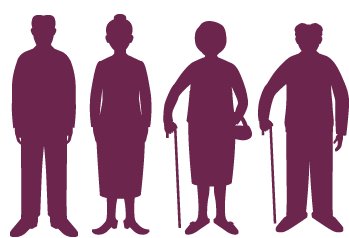Alpha Mannosidosis is a lifelong multi-systemic progression with neuromuscular and skeletal deterioration over decades. The timing of the appearance of symptoms correlates with the severity of the disease. Neonates with lysosomal disorders are mostly asymptomatic and only rarely severely affected, which delays diagnosis.1 2
The first decade of life is characterised by early development of hearing impairment, psychomotor delay, frequent recurrent infections, especially upper airway infections, pulmonary infections and acute/serous otitis media infections.3
During the second and third decades of their lives, patients develop polyarthropathy, ataxia, muscle weakness, and severe skeletal problems, which eventually leave the patient unable to walk. Patients typically present with skeletal and facial abnormalities, hearing loss, intellectual disability, and immune deficiency.4
In the more severe form, where the condition appears in infancy in most cases, and leads to early death following severe infections.5 However, those presenting with the milder form can usually survive into adulthood.6

When a neonate or infant has hearing difficulties and impaired motor skills, recurrent infections or skeletal abnormalities that child should be tested for lysosomal storage disease and Alpha Mannosidosis. Urine tests and blood tests for enzyme activity are reliable in establishing a diagnosis.8 Genetic testing can detect the mutation of the MAN2B1 gene that causes Alpha Mannosidosis, thus facilitating early identification and treatment.9

Recurrent ear infections associated with hearing loss.12 Progressive impairment of mental functions, speech and motor control.13 Hydrocephalus can be present in the first year of life.14

Muscular weakness and ataxia, skeletal abnormalities and destructive poly-arthropathy.15
Neuro-cognitive development is usually arrested and psychiatric disorders may also manifest.16

Patients are unable to achieve complete social independence.17
There are very limited data regarding life expectancy in adults.
The long-term prognosis of this condition is poor, and there is likely to be a progressive clinical deterioration throughout adult life.18 19
The timing of the appearance of symptoms correlates with the severity of the disease, with the severe form appearing in infancy, and usually leading to early death following severe infections.20
The mild and moderate forms of Alpha Mannosidosis – juvenile onset – have survival into adulthood.21 22
The information on this website is intended only to provide knowledge of Alpha Mannosidosis disease health topics. This information should not be used in place of advice from your GP or other healthcare professional. If in doubt please contact your doctor for advice. This website has been produced by Chiesi Pharmaceuticals. The website has been developed in accordance with industry and legal standards to provide information for healthcare professionals and the general public about Alpha Mannosidosis disease health topics. Chiesi Pharmaceuticals makes every reasonable effort to include accurate and current information. However, the information provided in this website is not exhaustive.